1The productionpossibilities curve illustrates Select one a
1.The production-possibilities curve illustrates: Select one:
a. The limitations that exist because of scarce resources. b. That there is no limit to what an economy can produce. c. That there is no limit to the level of output. d. The existence of unlimited wants and resources.
2.If an economy experiences increasing opportunity costs with respect to two goods, then the production-possibilities curve between the two goods will be:
Select one:
a. Bowed outward.
b. Bowed inward.
c. A straight, downward-sloping line.
d. All of the above are possible.
3.Efficiency can be defined as the:
Select one:
a. Maximum resources used in producing a given output level.
b. Maximum output of a good produced from the available resources.
c. Minimum output of a good produced from the available resources.
d. Maximum output of a good produced if all resources are devoted to its production.
4.
If an economy is producing inside the production-possibilities curve, then:
Select one:
a. There is unemployment of resources.
b. It is operating inefficiently.
c. It can produce more of one good without giving up some of another good.
d. All of the above.
5.
The production-possibilities curve shifts outward in response to:
Select one:
a. Better technology or fewer resources or both.
b. Better technology or more resources or both.
c. Declining technology or fewer resources or both.
d. Declining technology or more resources or both.
6.
In a market economy, the question of WHAT to produce is answered by:
Select one:
a. Direct negotiations between consumers and producers.
b. Producer profits and sales.
c. Government directives.
d. A democratic vote of all producers.
7.
The market mechanism:
Select one:
a. Allows buyers to communicate with producers indirectly.
b. Is directed by the government in order to promote efficiency.
c. Results in the misallocation of resources because producers seek to maximize profits.
d. Allocates goods in an equitable manner.
8.
The market mechanism may best be defined as:
Select one:
a. Price regulation by government.
b. The use of market signals and government directives to select economic outcomes.
c. The process by which the production-possibilities curve shifts inward.
d. The use of market prices and sales to signal desired output.
9.
Which of the following would advocate a laissez faire economic policy?
Select one:
a. Karl Marx.
b. Adam Smith.
c. John Maynard Keynes.
d. President Franklin Roosevelt.
10.
Pollution is an example of:
Select one:
a. Inefficient operation by the firm that is polluting.
b. Market failure.
c. The ability of central planning to provide the optimal quantities of goods.
d. All of the above.
11.
Which of the following is an example of government failure?
Select one:
a. Bureaucratic delays.
b. Required use of pollution-control technologies that are obsolete.
c. Inefficient incentives.
d. All of the above.
12.
The study of microeconomic theory focuses on the:
Select one:
a. Interaction of international trade and domestic production of goods and services.
b. Operation of the entire economy.
c. Role of the banking system in the economy.
d. Structure and performance of markets and the operation of the price system.
13.
Which of the following are classified as microeconomic goals?
Select one:
a. Full employment, price stability, growth in output.
b. The welfare of individual consumers and business firms.
c. Production, pricing, and purchasing.
d. Land, labor, and capital.
14
The production-possibilities curve illustrates that:
Select one:
a. Society can always produce more of all goods simultaneously.
b. Constant opportunity costs always exist.
c. There are no opportunity costs in a wealthy economy.
d. If society is efficient, it can produce more of one good only if it reduces output of another good.
15.
As a result of free markets and entrepreneurship, we can expect:
Select one:
a. Innovation.
b. Improvements in technology.
c. Economic growth.
d. All of the above.
16.
Which of the following correctly characterizes the shape of a production-possibilities curve?
Select one:
a. A straight line indicating the law of increasing opportunity costs applies.
b. A straight line when there are constant opportunity costs.
c. A line that curves outward when resources are perfectly adaptable in the production of different goods.
d. A line that curves inward when resources are perfectly adaptable in the production of different goods.
17.
Which of the following is the best example of land?
Select one:
a. The gasoline refined from crude oil.
b. A factory that produces new goods and services.
c. The river water used to float a riverboat casino.
d. A shovel.
18.
Ceteris paribus, if Korea increases the size of its military, then its:
Select one:
a. Production-possibilities curve will shift outward.
b. Production-possibilities curve will shift inward.
c. Production of non-military goods will increase.
d. Production of non-military goods will decrease.
19.
A city\'s decision to control apartment rents is an example of:
Select one:
a. The invisible hand at work.
b. Market failure.
c. The market mechanism at work.
d. Government intervention.
Solution
1. a. The limitations that exist because of scarce resources.
2. a. Bowed outward.
3. b. Maximum output of a good produced from the available resources.
4. b. It is operating inefficiently.
5. b. Better technology or more resources or both.
6. b. Producer profits and sales.
7. c. Results in the misallocation of resources because producers seek to maximize profits.
8. d. The use of market prices and sales to signal desired output.
9. b. Adam Smith.
10. a. Inefficient operation by the firm that is polluting.
11. d. All of the above.
12. d. Structure and performance of markets and the operation of the price system.
13. a. Full employment, price stability, growth in output.
14. a. Society can always produce more of all goods simultaneously.
15. d. All of the above.
16. c. A line that curves outward when resources are perfectly adaptable in the production of different goods.
17. a. The gasoline refined from crude oil.
18. d. Production of non-military goods will decrease.
19. d. Government intervention.
*****
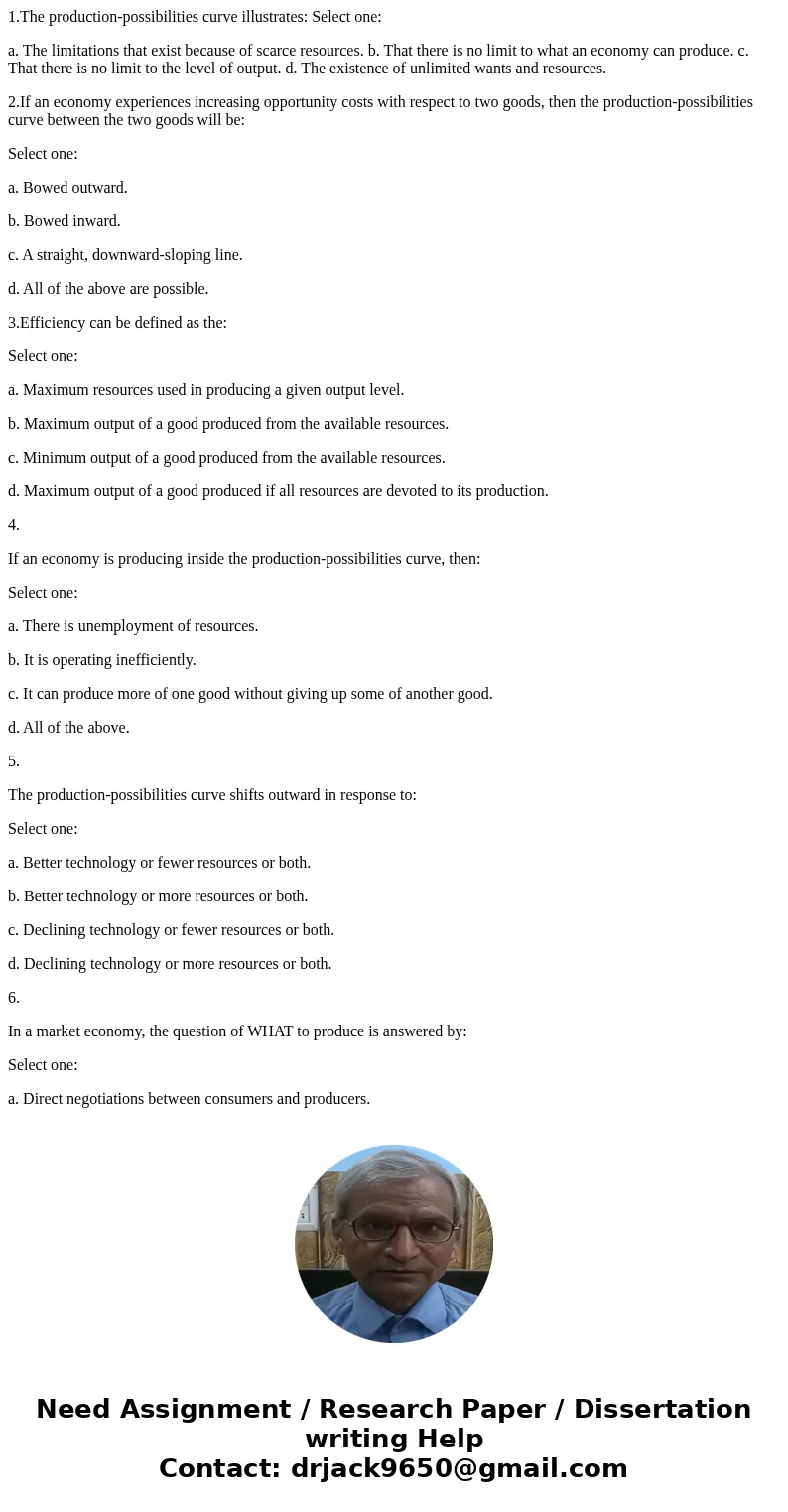
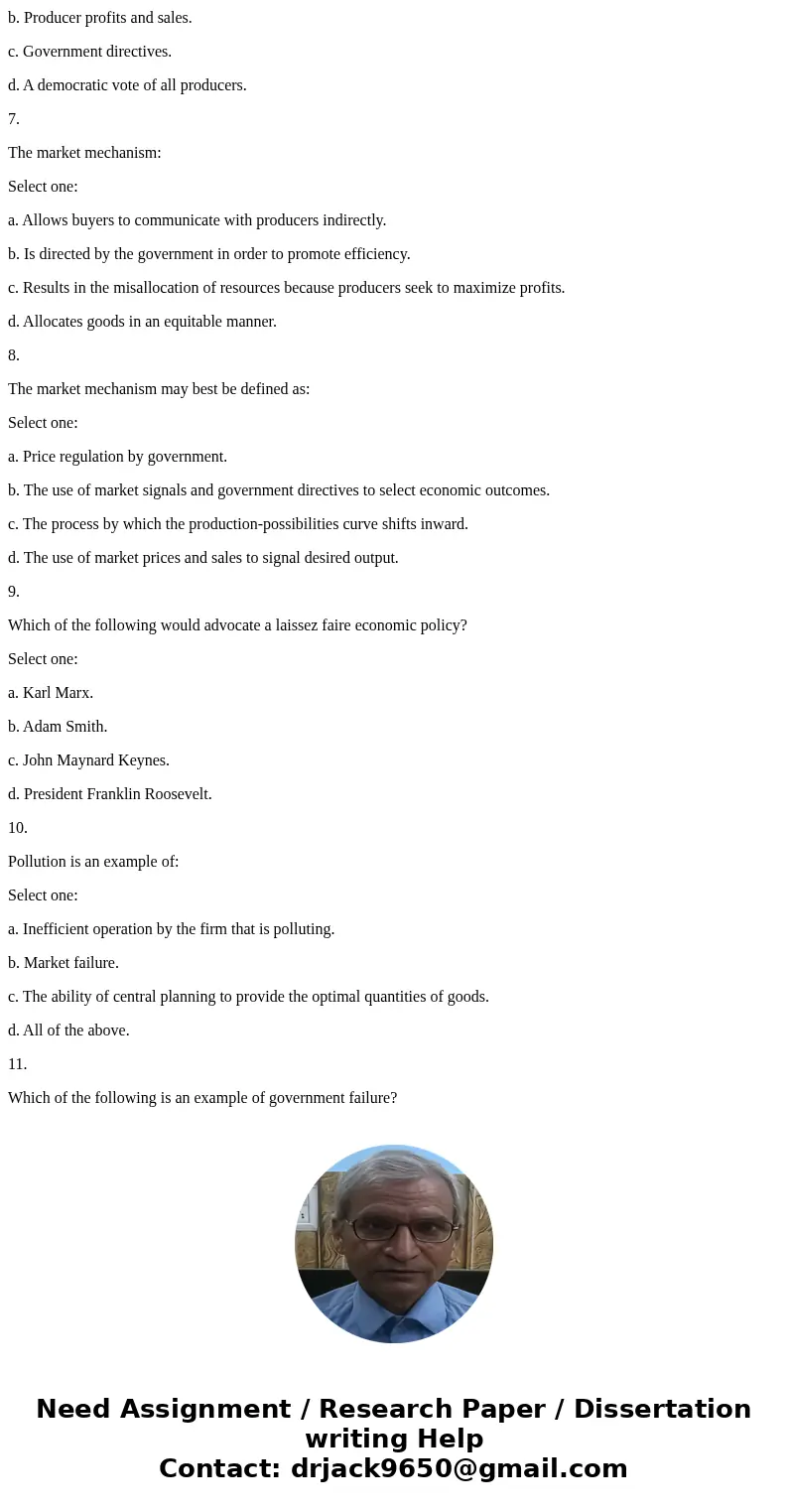
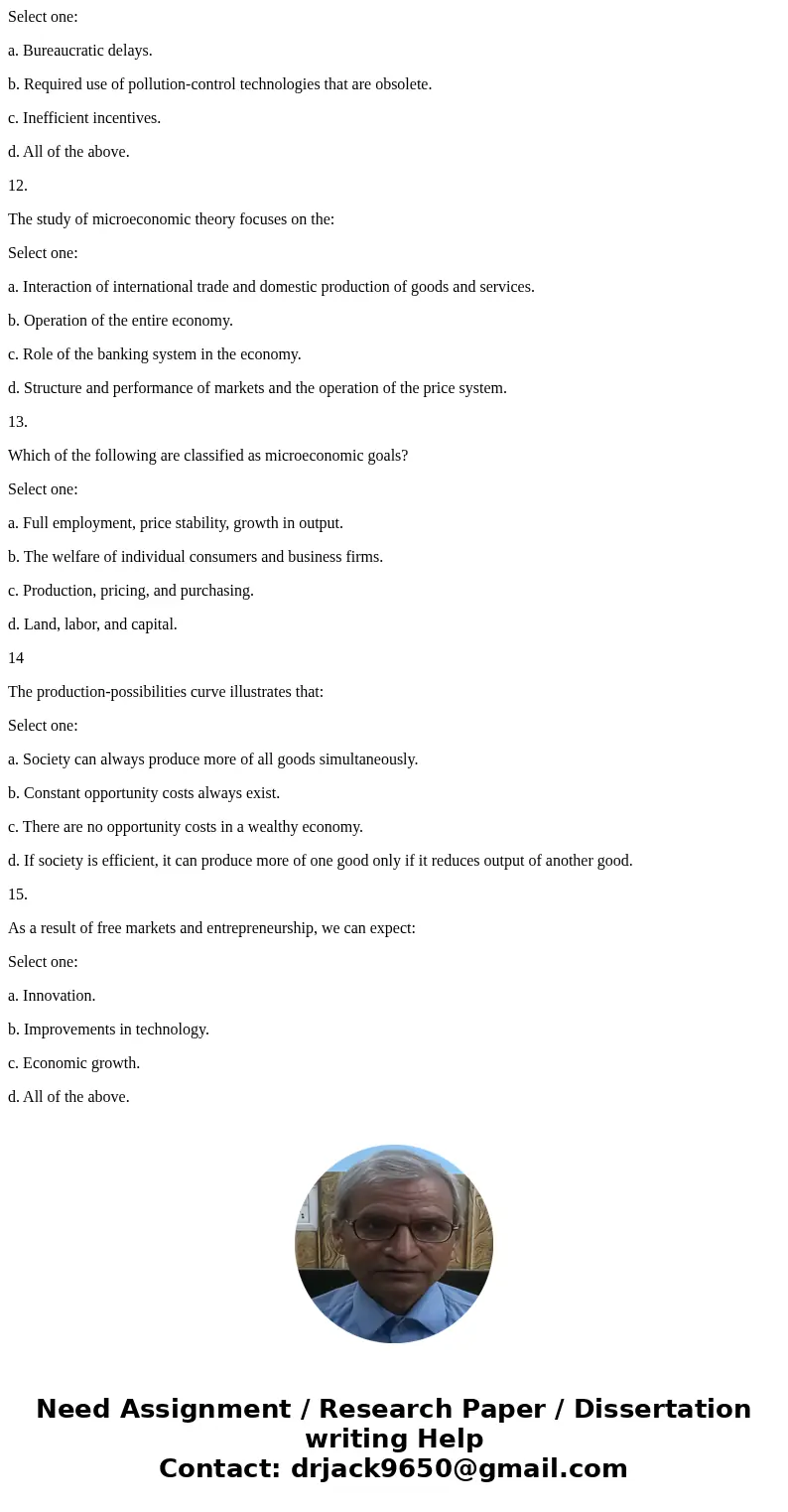
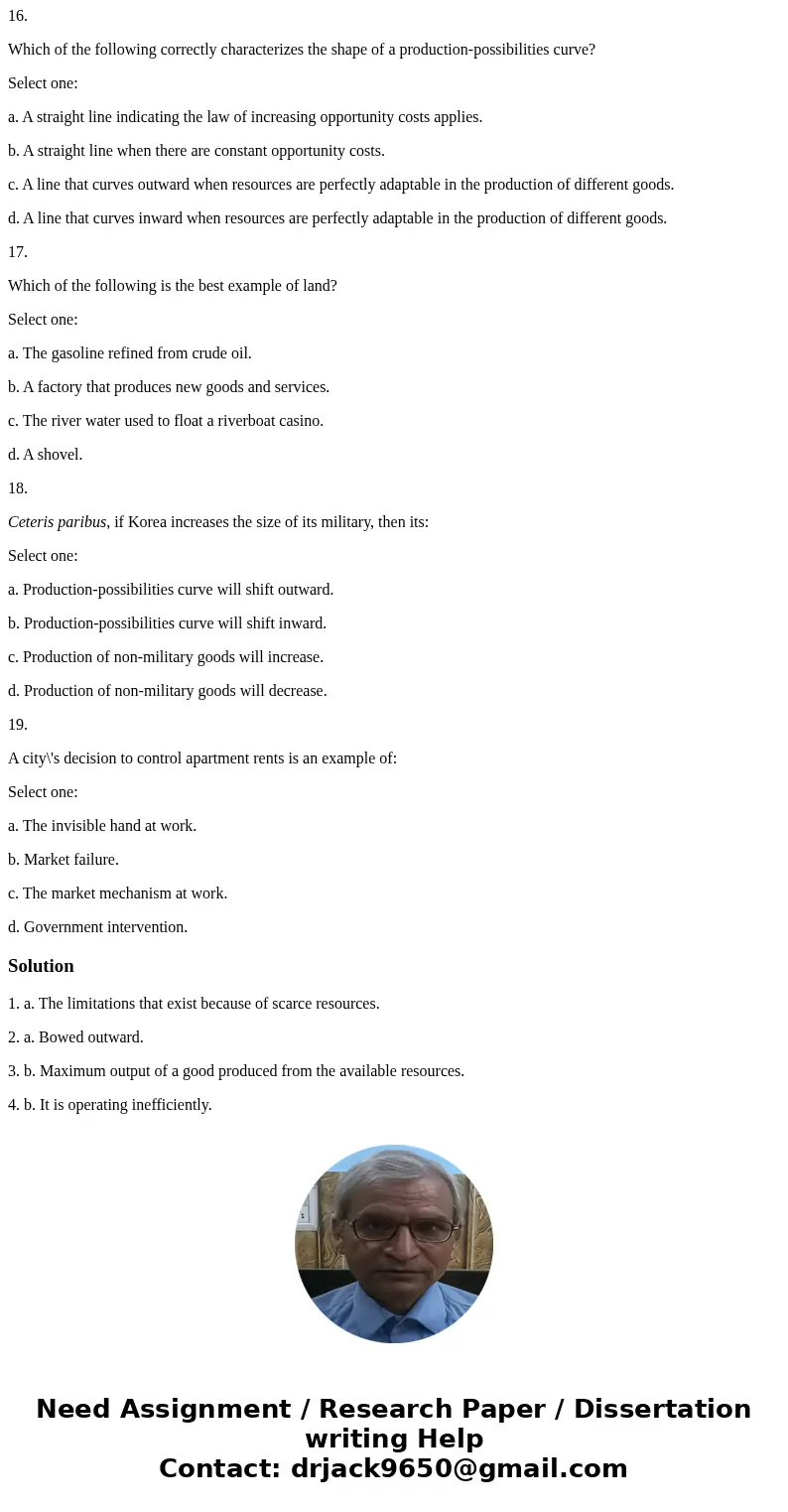
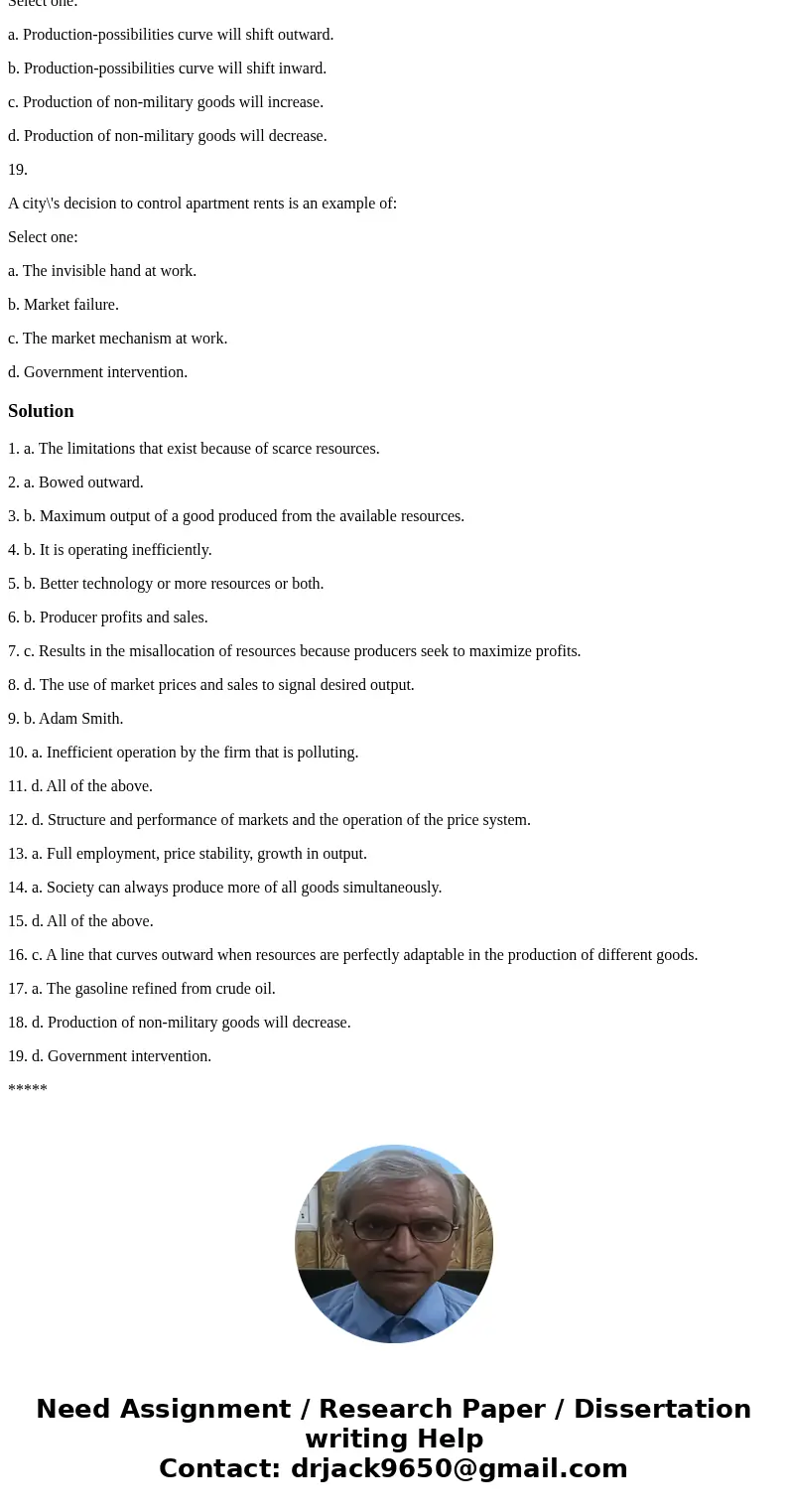
 Homework Sourse
Homework Sourse